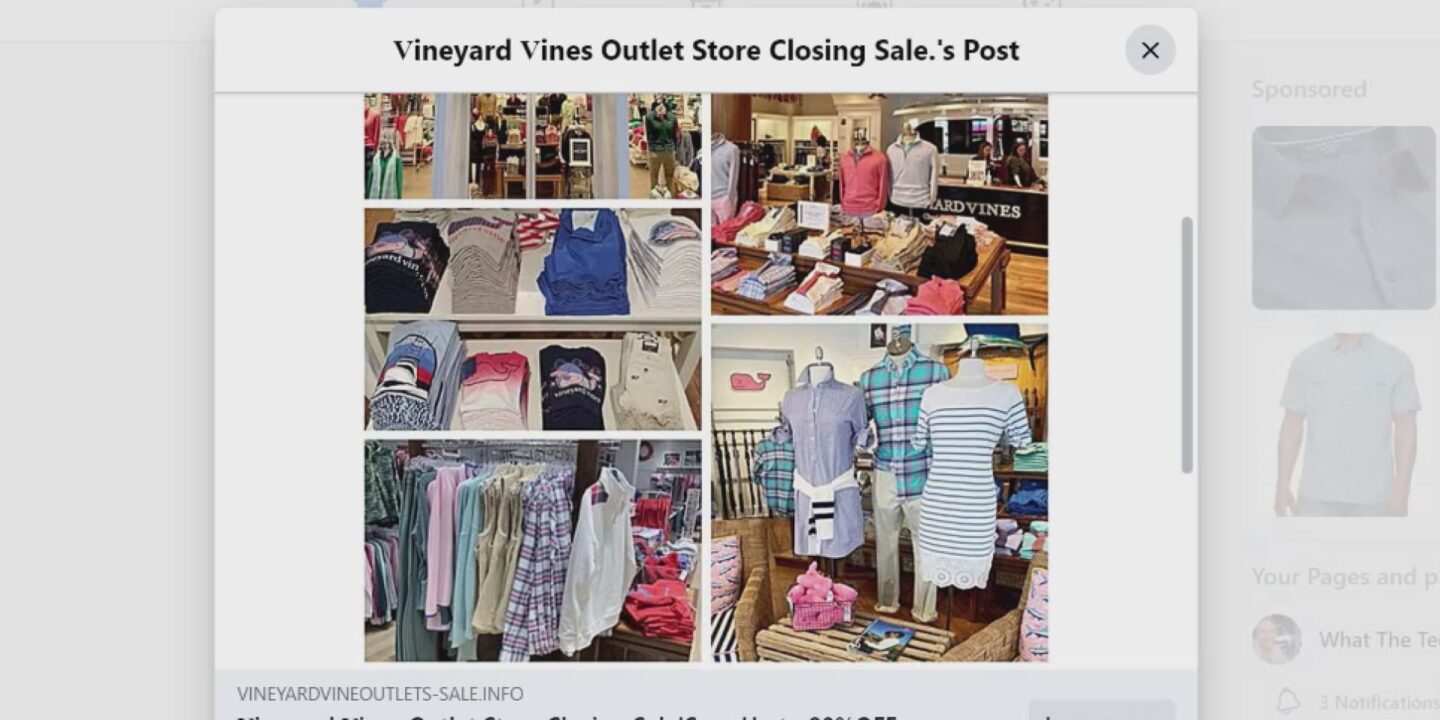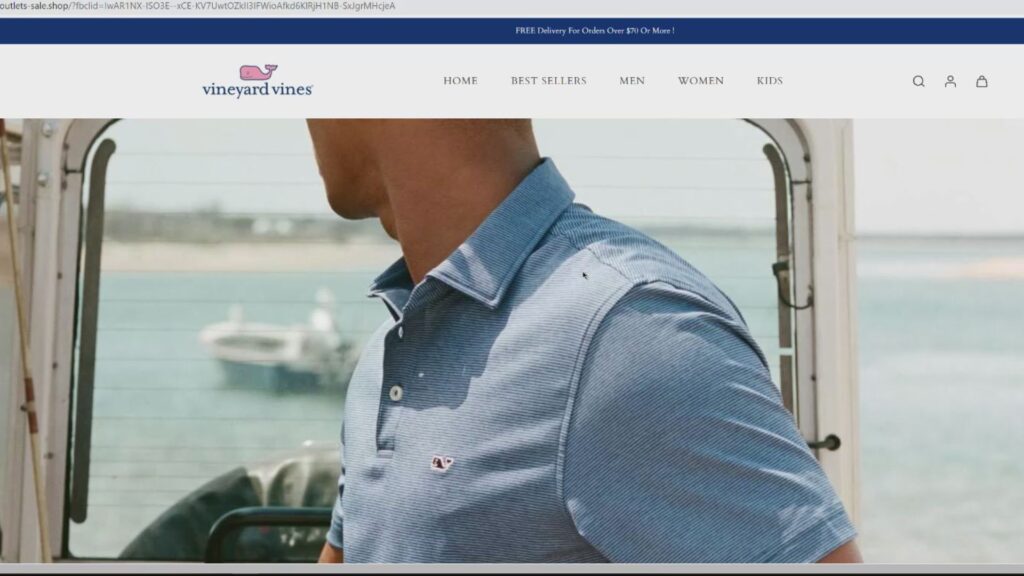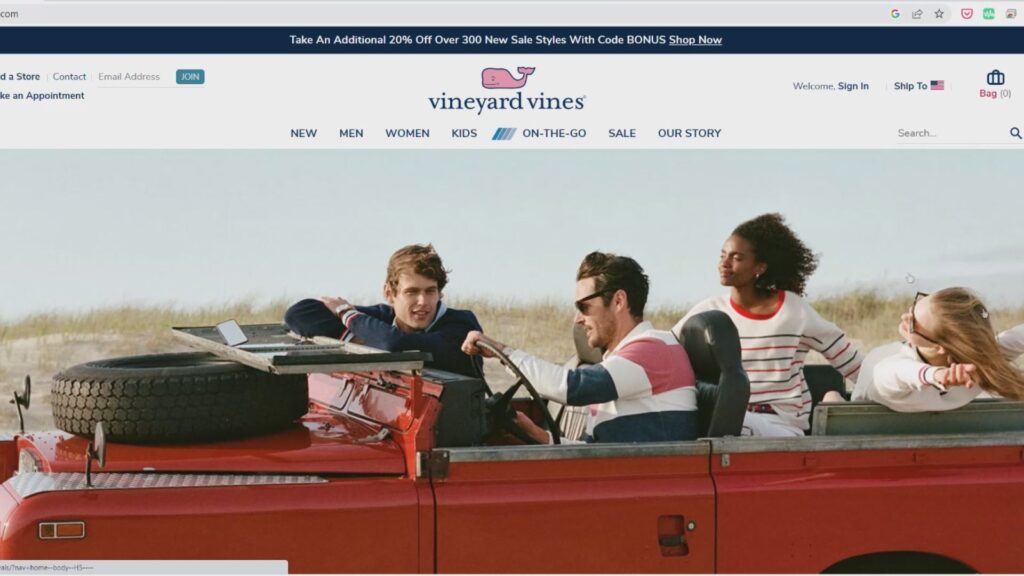- Home
- The Latest
- How to spot fake Facebook ads ...

We all hate advertisements taking up room on our Facebook newsfeeds. In recent years it seems “sponsored ads” are growing in number. What’s worse is that some of those sponsored ads are scams and they’re getting harder to spot. I’ll be honest, I’ve been tricked by a scam ad on Facebook and was a click or two away from giving my credit card information to scammers.
Scam websites look like the real thing
The ad that tricked me was for an outlet sale by retailer Vineyard Vines. For those unfamiliar with VV, the merchandise is of the highest quality and many of its most popular items are over $100. An outlet sale is attractive.
I clicked on the ad and was taken to a website that looks almost identical to the legitimate Vineyard Vines site. Without doing some digging, it’s almost impossible to tell the real thing for the fake. In fact, in this case, unless you have both sites open at once they look identical.
Can you tell which of these websites is the actual Vineyard Vines website?


Tricky isn’t it. The one on top is the scam site. The photo below is www.vineyardvines.com
So I shopped and found huge discounts on expensive clothing. A $350 sportcoat is on sale for $70, and there is a $100 women’s polo shirt for $20. That’s suspicious but the website shows a “Trusted Site” pop-up that looks convincing.
Upon closer inspection, I found the website address is vineyardvineoutlet-sale.com without the ‘s’. Also, the ‘-sale.com’ should be a giveaway.
How to spot the fake sponsored scams
This scam could work in a few ways. The scammer retailer might never send you what you order or it might send you cheap knockoff merchandise. At worst though, it’s getting your credit card information including the expiration date and the verification number. It also gets your name, mailing address, email address, and phone number.
Here’s how to find out if the sponsored ad is a scam or the real thing:
- How are payments accepted? The scam site says you can pay by Paypal, which is a safer way to spend money online. But there’s no option on the checkout page. It only wants your credit card information.
- Does the site prompt you to act quickly? The fake site claims there’s a limited supply of every product. It shows the number of people with the same item in their cart right and how many are looking. Pressure to buy ‘right now’ is a red flag. VineyardVines does not use this tactic.
- To see for sure if a site is fake, copy the address and enter it into the WhoIs database https://lookup.icann.org/en This shows information about who owns the site.
In the case of the fake VineyardVines site, it’s owned by a company in China. And, it was launched just a few days ago.
So Why does Facebook allow the scam ads?
So how do these scams keep appearing on your Facebook newsfeed? Meta makes a great deal of money from sponsored ads and it’s been criticized over and over again for dragging its feet on removing the sponsored ads. Even after reporting the scam website and ad to Facebook days ago, it still appears along with dozens more from other reputable retailers. If Meta isn’t doing enough to block them, it’s up to Facebook users to investigate before spending money.
tags: fake Facebook ads, Facebook scams, online scams, ad fraud, fraudulent advertisements, internet safety, avoiding scams, deceptive ads, social media scams, Facebook advertising fraud, identifying fake ads, protecting against online scams, online security, scam prevention, Facebook ad verification, staying safe online, recognizing fraudulent content, online fraud awareness, cybercrime prevention, digital advertising fraud, online privacy.

